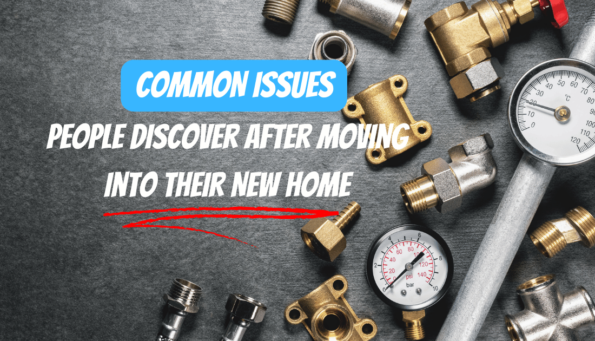Moving into a new home is an exciting milestone, marking a fresh chapter filled with possibilities. However, this transition can sometimes unveil unexpected challenges, particularly in older properties or previous owners who may have attempted DIY plumbing installations. In this detailed exploration, we delve into common issues that homeowners might encounter, shedding light on potential pitfalls and offering insights to navigate these plumbing challenges effectively:
Aging Cast-Iron or Clay Pipes
Many older homes rely on cast-iron or clay pipes for plumbing, which were once standard but can now be prone to deterioration. Over time, these pipes can become brittle, corroded, or even collapse, leading to leaks, blockages, and costly repairs. Replacement with modern materials like PVC or PEX may be necessary to ensure reliable water flow and prevent future issues.
Misaligned or Sagging Pipes
Improperly sloped or sagging pipes can cause significant drainage problems. When pipes aren’t correctly aligned or supported, wastewater may not drain properly, leading to persistent clogs and backups in sinks, toilets, or showers. Resolving these issues typically involves adjusting pipe slopes or reinforcing supports to ensure correct drainage and prevent future damage.
Lack of Shutoff Valves
Older homes or DIY plumbing projects may lack essential shutoff valves, making routine maintenance and emergency repairs more challenging. Instead of individual valves for fixtures like sinks and toilets, there might only be one main valve for the entire home. Installing or upgrading shutoff valves can enhance plumbing efficiency and streamline future repairs by isolating specific areas without shutting off water to the entire house.
Issues with Polybutylene Pipes
Once popular for their cost-effectiveness, polybutylene pipes are now known for their susceptibility to early deterioration. Used extensively from the late 1970s to the 1990s, these pipes can degrade prematurely due to exposure to chlorine and other chemicals in water supply systems. Homeowners may discover unexpected leaks or ruptures, necessitating complete replacement with more durable materials like copper or modern plastics.
Common Leaks
Leaks are a common concern in both old and new homes. These issues can arise from various factors, such as deterioration of pipe materials, inadequate connections, or physical impacts. Signs of leaks may include damp spots on walls or ceilings, water stains, or unexplained increases in water bills. It’s essential to promptly address leaks to prevent structural damage, the growth of mould, and additional plumbing complications. Professional inspection and repair can identify the source of leaks and ensure effective long-term solutions.
Aging Sump Pumps
Sump pumps are critical in managing groundwater and preventing basement flooding, particularly in homes with below-grade spaces. Over time, sump pumps can experience wear and decreased efficiency, especially if not maintained or replaced according to manufacturer recommendations. Homeowners should consider replacing sump pumps every seven to ten years to ensure reliable operation during heavy rains or snowmelt, reducing the risk of water damage and mould growth in basements.
Water Heater Concerns
Water heaters supply hot water for bathing, cleaning, and cooking. Traditional tank-style water heaters generally last 10 to 15 years, while tankless models can offer extended longevity when properly maintained. Homeowners moving into properties with rented water heaters should know contractual obligations, as rental agreements can be challenging and costly to terminate. Regular maintenance, including flushing sediment and checking heating elements, can extend the lifespan and efficiency of water heaters, ensuring continued comfort and convenience.
Water Pressure Issues
In some homes, fluctuating or inadequate water pressure can persist. This can stem from various factors such as clogged pipes, mineral deposits, or outdated plumbing systems. Low water pressure can affect everyday activities like showering and dishwashing, leading to inconvenience and frustration. Addressing water pressure issues may involve cleaning or replacing clogged fixtures, adjusting pressure regulators, or upgrading plumbing infrastructure to ensure consistent and adequate water flow throughout the home.
Conclusion
Discovering plumbing and infrastructure issues after moving into a new home can be overwhelming, but proactive maintenance and timely repairs can mitigate these challenges. By staying informed about common issues like aging pipes, leaks, and equipment lifespan, homeowners can safeguard their investments and ensure their homes remain comfortable and efficient for years. Regular inspections by qualified professionals and prompt attention to any signs of plumbing problems are essential to maintaining a reliable and functional system. Homeowners can enjoy their new homes without worry by giving adequate care and attention.












